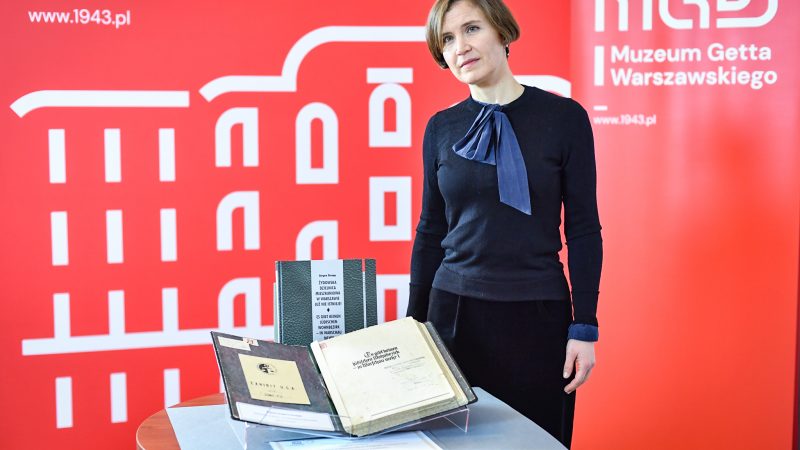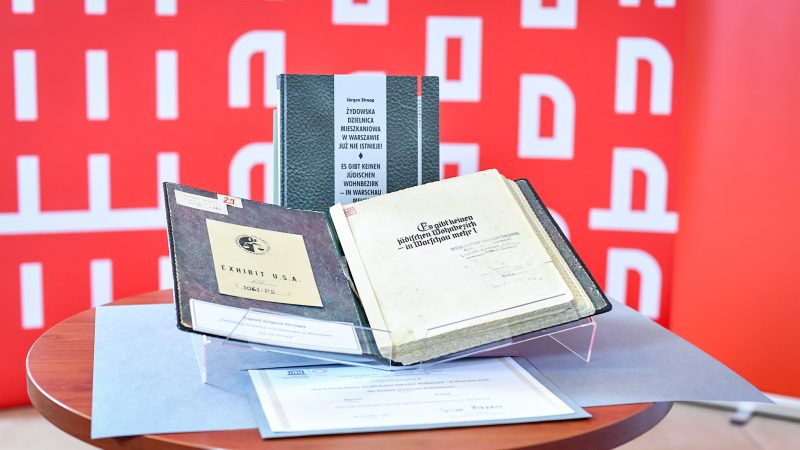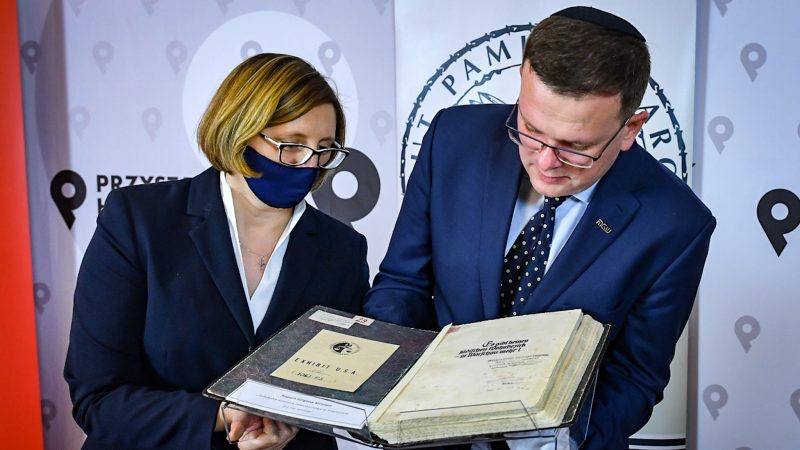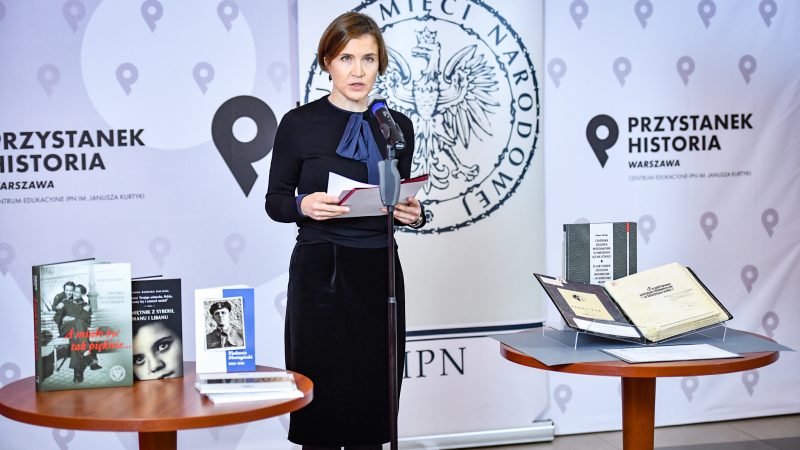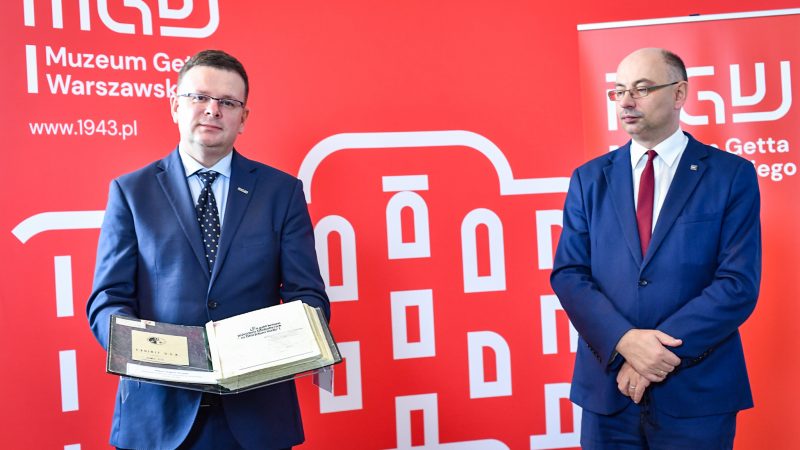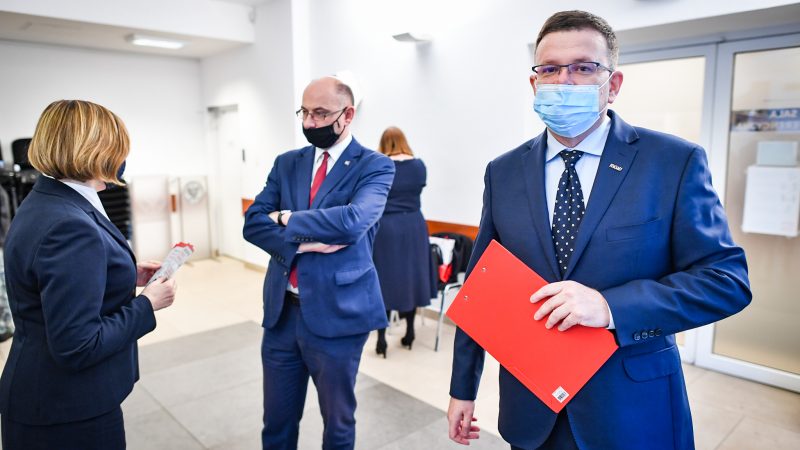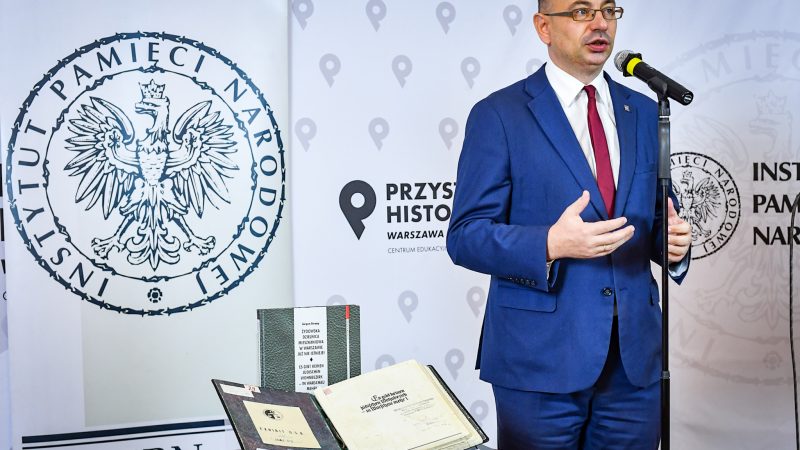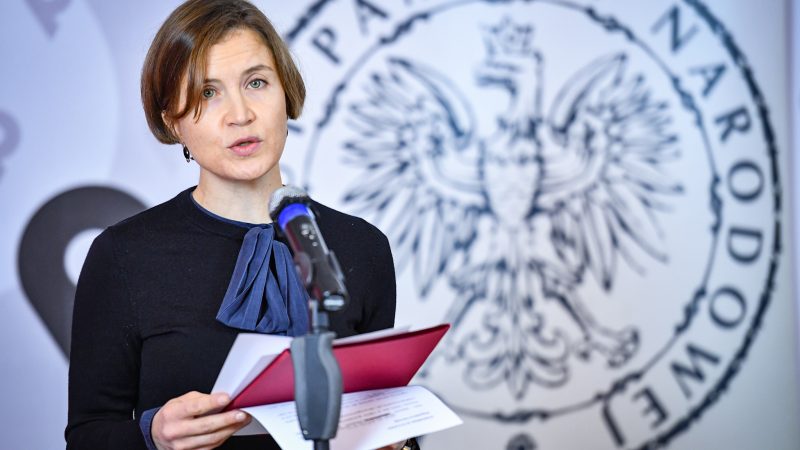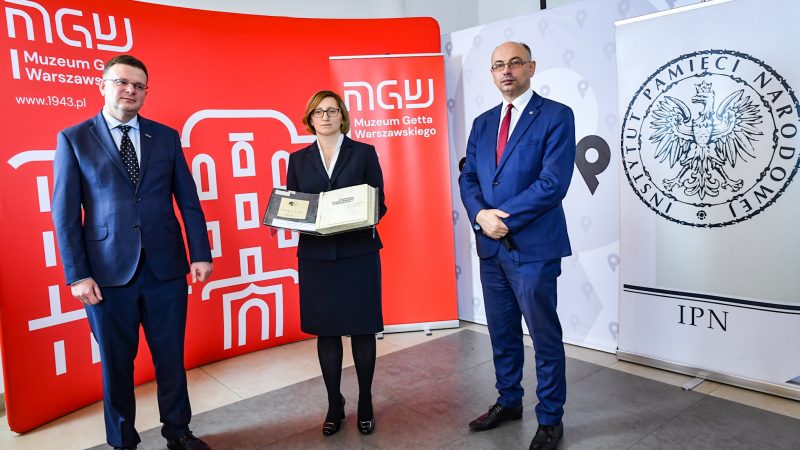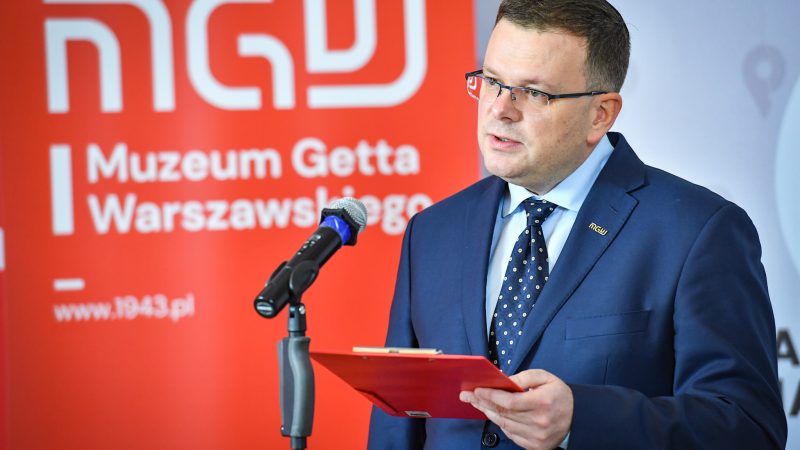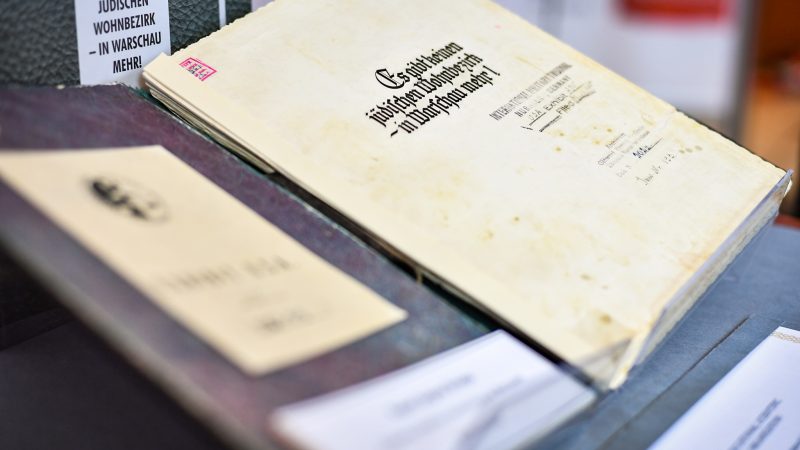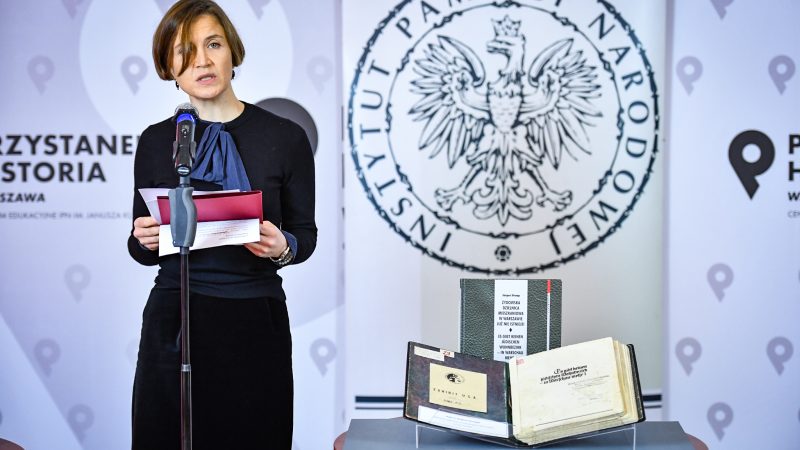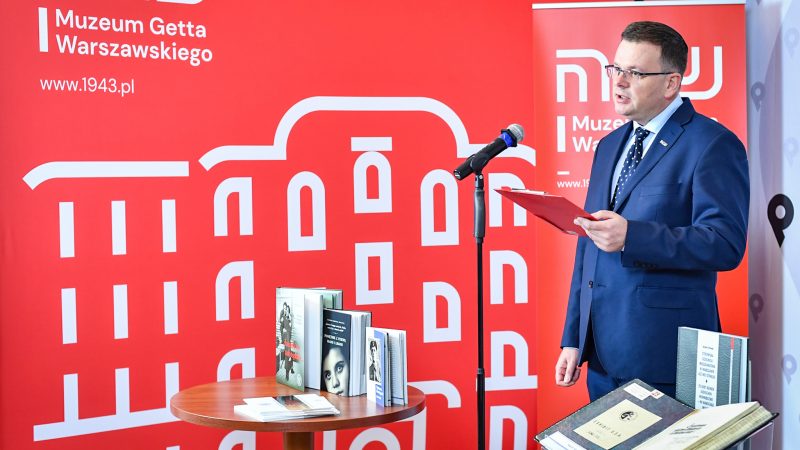The Stroop Report for the Warsaw Ghetto Museum
The Institute of National Remembrance handed over the original Jürgen Stroop’s Report to be deposited in the Warsaw Ghetto Museum. One of the most relevant testimonies of the Holocaust will be available at the permanent exhibition of the WGM, at the former Bersohn and Bauman Children’s Hospital
12 November 2020
“It is an important decision for the Institute of National Remembrance. The document was created by the German occupier and was intended to present the glory of Stroop and his subordinates. However, the report reveals victims and crimes of the German occupiers against the Warsaw Jews. It demonstrates the bravery of the Jews, who, in the spring of 1943, decided to fight despite knowing in advance that their efforts were doomed to failure” stated the Deputy President of the Institute of National Remembrance. At the same time, Mateusz Szpytma emphasised that the document is handed over to the museum that is regarded as one of the most relevant institutions presenting the history of Polish Jews during World War II.
The Stroop Report is an official report on the German action of suppressing the uprising in the Warsaw Ghetto – the largest separated, enclosed quarter for Jews in occupied Europe – as well as its liquidation in the spring of 1943. In Stroop’s document, the Holocaust is presented from the perspective of a criminal, not a victim, therefore the document – contrary to the author’s intentions – does not glorify the German “courage, strength and generosity“, but constitutes an indictment and evidence of the crime committed against the Jewish population. Instead of praising the merits of soldiers who ruthlessly followed orders, it is a tribute paid to their innocent victims. The photographic part of the report includes extremely evocative pictures, permanently inscribed in the consciousness of people all over the world and explicitly associated with the Holocaust. Some of the pictures acquired the status of photographic icons symbolising the Holocaust. Jürgen Stroop – referred to as the executioner of the Warsaw Ghetto – entitled his report: “The Jewish quarter in Warsaw no longer exists!“. In 2017, the document was added to the UNESCO Memory of the World Register.
“When two years ago, with the group of people who initiated the Warsaw Ghetto Museum we discussed the challenges awaiting us in the future, it seemed obvious that the most difficult task would be to acquire objects for the museum’s permanent exhibition. Handover of one of the most relevant documents confirming German crimes against Polish Jews is of major importance for the Warsaw Ghetto Museum,” emphasised Albert Stankowski. Having expressed his gratitude to the management of the Institute of National Remembrance, the President of the Warsaw Ghetto Museum stated that it is a symbolic beginning of the international campaign for the collection of relics.
The projects of the Archive of the Institute of National Remembrance and the Warsaw Ghetto Museum, including the acquisition and preservation of documents related to the history of 20th century Poland, were also presented during the press conference. Marzena Kruk, Archive Director of the Institute of National Remembrance, spoke about “The Archive Full of Remembrance” initiative. https://archiwumpamieci.pl/.
Magdalena Hartwig, Head of the WGM’s Department of Collections, presented the “We Collect, Build, Remember” campaign. That way, the Warsaw Ghetto Museum inaugurated a campaign of relic collection, which – next to the Stroop Report – will serve to create a permanent exhibition. https://1943.pl/zbieramy-swiadectwa/The cooperation between the Institute of National Remembrance and the Warsaw Ghetto Museum is carried out under the agreement signed on 19 April 2019.
The Warsaw Ghetto Museum is an institution in organisation. Its objective is to present tragic events which occurred in the period of the German occupation of Poland during World War II and to commemorate those who lived and suffered in the ghetto. The museum is to commemorate other ghettos as well.
The institution was established in March 2018. Since then, the permanent exhibition team has developed the programme of the permanent exhibition. The following substantive departments were created within the structure of the institution: Science and Research, Exhibition, Education and Collections. The Museum has undertaken several initiatives aimed at the commemoration of events associated with the Warsaw Ghetto (including the anniversaries of the beginning of Grossaktion and the outbreak of the Ghetto Uprising), exhibition (5 outdoor exhibitions), education (workshops for teachers) and promotion of history. The institution’s long-term action plan involves the purchase of the building, which in the past accommodated a hospital founded by Bersohn and Bauman families, which so far has been leased from the Marshal’s Office of the Mazowieckie Voivodship.
In October 20202, the Warsaw Ghetto Museum announced a tender procedure for the “Development of project documentation for an investment project called “Construction of the Warsaw Ghetto Museum“, along with the design of a permanent exhibition and obtaining the required arrangements and administrative decisions, as well as design supervision.” The Warsaw Ghetto Museum has also been working on building the collection and obtaining artefacts intended for display at the permanent exhibition.
Miłka Skalska, Press Officer and Head of Communication Department
Photo Jacek Turczyk


